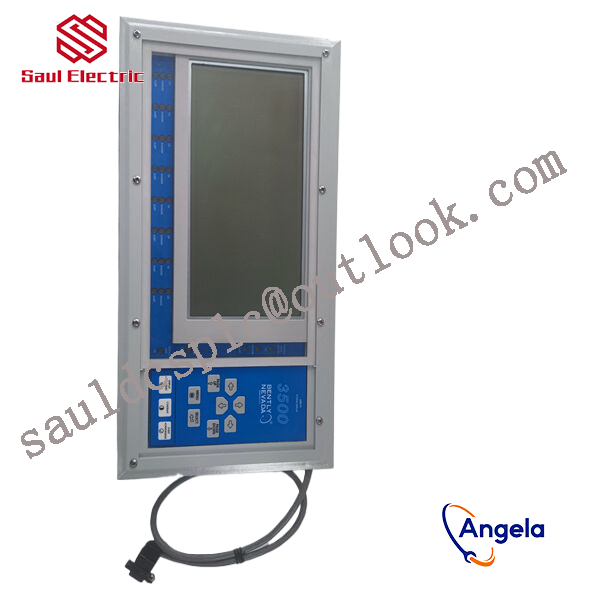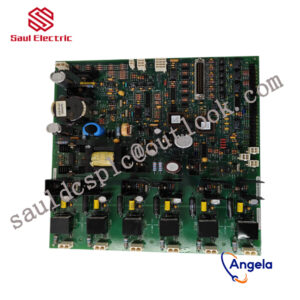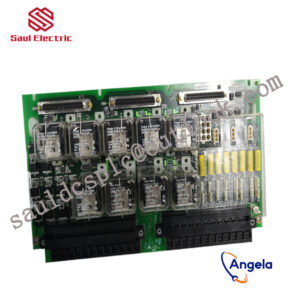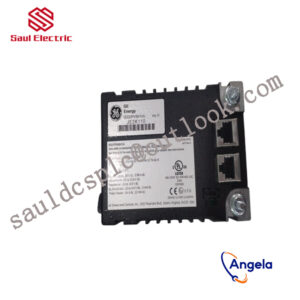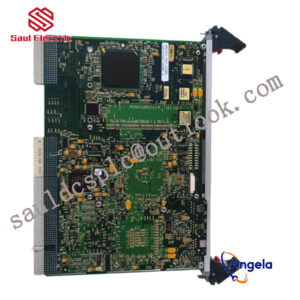Description
- BENTLY 3300/14 gateway is designed with multi protocol compatibility and modularity, seamlessly connecting industrial systems,
- operating at a wide temperature range of -40 ° C to 85 ° C, supporting 8-channel rotating equipment monitoring,
- remote configuration to improve efficiency, and ensuring stable power and automation.
It can connect the Bently Nevada 3500 system with other control systems or host computers to achieve data interconnectivity.
thus achieving integration with other industrial control systems.
Implementation of communication between ABC industrial robot and PLC based on DeviceNet fieldbus technologyintroductionIn modern production systems, industrial robots and PLCs need to communicate and collaborate to complete production tasks. That is, the industrial robots output signals to the PLC, allowing the PLC to control related equipment to drive the robot”s front-end tools. This article mainly analyzes the communication problems between ABB industrial robots and PLC based on DeviceNet fieldbus technology. DeviceNet is a common network communication method in the field of automation. ABB industrial robots establish a network to communicate with Siemens PLC based on the DeviceNet network.1Configure DSQC652There are mainly 5 types of standard I/0 boards commonly used in ABB industrial robots [2]. Except for the different addresses assigned to them during setup, their configuration methods are basically the same. This article mainly analyzes the ABB standard I/0 board DS0C652, which mainly builds communication modules based on the DeviceNet network. The DS0C652 board has a distributed I/O module with 16 digital input and 16 digital output interfaces. The board is installed in the ABB industrial robot control cabinet. First, define the specific operation steps of the DS0C652 board, enter the teach pendant control panel, then enter the configuration menu (Figure 1), select the DeviceNetDevice menu, and add a template to enter Figure 2. ABB standard I/0 board is hung on the DeviceNet network, so the address of the module in the network must be set. The jumpers 6 to 12 of terminal x5 are used to determine the address of the module. The available address range is 10 to 63. Modify the parameters in the template parameters to complete the DS0C652 board settings. Click the drop-down menu to select the “Use value from template” row, select “DS0C65224VDCI/0Device”, and then the parameters that need to be set include the address of the I/0 board in the bus.Figure 1 Configuring DSQC6522Configure signals and parametersAfter completing the DS0C652 board setting, the I/0 signal setting will be performed. Setting the I/0 signal is the basis for establishing communication with the PLC. The PLC communicates and transmits data with the ABB industrial robot through the I/0 signal and the DS0C652 board. As shown in Figure 3, in the signal configuration interface, there are many default I/0 points after the system is established. Modification is not allowed. Click “Add” to add signals. When setting input and output signals, their address range is 0~15. First, enter the signal menu in the configuration options to set the input and output types, and modify the corresponding parameters. After completing the settings, the computer prompts that you need to restart the settings. If there are multiple signals that need to be defined and the waiting time is long after restarting multiple times, you can click “Cancel” and wait for all signals to be defined before clicking the “Yes” button to restart. After the signal settings are completed, click to select “Input and Output” in the ABB menu to check whether all signals have been set.Figure 2 Configure DSQC652 parametersFigure 3 Signal parameter settingsDuring the signal establishment process, attention should be paid to the DSoC652 port and PLC port addresses used, and the corresponding address table should be established, as shown in Table 1. The robot interacts with the PLC through I/O signals. During the setting process, there must be no errors in the port and address number of the PLC connected to the DSoC652. If the address is set incorrectly, the communication between the robot and the PLC will not work properly.The entire robot teaching pendant setting process is shown in Figure 4.
330780-50-00 Bently Nevada 3300 XL 11 mm Proximitor Sensor
330180-X0-05 Bently Nevada 3300 XL Proximitor Sensor
3500/92 Bently Nevada Communication Gateway
3500/42M Bently Nevada Proximitor Seismic Monitor
125840-02 Bently Nevada Low Voltage AC Power Input Module
330130-040-01-00 Bently Nevada 3300 XL Extension Cable
330106-05-30-10-02-00 Bently Nevada 3300 XL 8 mm Reverse Mount Probes
3500/44-01-00 Bently Nevada Aeroderivative Monitor
3500/33-01-00 Bently Nevada 16-Channel Relay Module
3500/25-01-01-00 Bently Nevada Enhanced Keyphasor Module
106M1081-01 Bently Nevada Universal AC Power Input Module
125720-01 Bently Nevada RELAY MODULE
125800-01 Bently Nevada Keyphasor I/O Module
135489-04 Bently Nevada I/O Module
133323-01 Bently Nevada Comms Gateway I/O Module
125840-01 Bently Nevada High Voltage AC Power Input Module
149992-01 Bently Nevada Spare 16-Channel Relay Output Module
330704-000-050-10-02-05 Bently Nevada Proximity Probes
3500/20 Bently Nevada RACK INTERFACE MODULE
3500/45-01-00 Bently Nevada Position Monitor
3500/40-01-00 Bently Nevada Proximitor Monitor
3500/50-01-00 Bently Nevada Tachometer Module
3500/45 Bently Nevada Position Monitor
3500/42-01-00 Bently Nevada Displacement monitor
3500/53 133388-01 Bently Nevada Overspeed Detection Module
330930-065-01-05 Bently Nevada NSv Extension Cable
330180-91-05 Bently Nevada 3300 XL Proximitor Sensor
3500/32M Bently Nevada Relay Module
3500/33-01-01 Bently Nevada 16-Channel Relay Module
3500/15 Bently Nevada height modules
3500/22M 288055-01 Bently Nevada Transient Data Interface Module
125760-01 Bently Nevada Data Manager I/O Module
135613-02 Bently Nevada High Temperature Case Expansion Transducer Assembly
133819-02 BENTLY RTD/TC Temp I/O Module
3500/15 127610-01 BENTLY AC Power Supply Module
BENTLY 3500/15 127610–01
BENTLY 1900/65A-00–00–02–00–01
BENTLY 3500/40M
BENTLY ASSY78462-01U
BENTLY 3500/42M
BENTLY 3500/65
125720-01 BENTLY
10244-27-50-01 BENTLY
106M1081-01 BENTLY
123M4610 BENTLY

